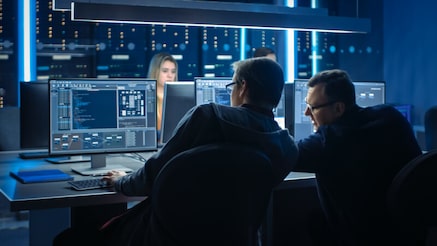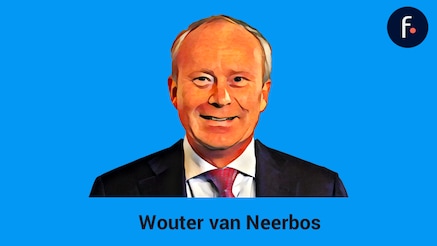Six ways MWC will herald the metaverse
GSMA has built MWC 2022 around six themes. We look at what each one means for today, tomorrow, and for the much-hyped Metaverse.

Jen is alone in a large bright space. There’s a lighted greenhouse roof and a black triangle of stars frames her head. She’s dressed in a red military coat and she’s dancing – spinning and whirling round and round – as a tinny beat thrums in the background. It is a strange setting, but then again, Jen is virtual.
This is Decentraland, one of the many incarnations of today’s metaverse. Part game, part shopping center – it’s a 3D virtual world, populated by avatars, where this March mega brands are tipped to partake in Metaverse Fashion Week. And the Australian Open (AO) recently offered a mirror schedule of its real-life tennis tournament with the bonus of collecting non-fungible tokens (NFTs).
The line between the physical and virtual world has been steadily blending for some time. And the future Metaverse promises to be its ultimate expression: total immersion—accessed by VR and backed by a fully virtual financial network. This may be a long way off, but already has wide implications, with Microsoft citing the metaverse as a reason for its recent $68.7 billion acquisition of Activision Blizzard.
Wherever all this is heading though, some trends are certainly converging and will eventually build into a brave new future of the internet. And this year’s Mobile World Congress (MWC) in Barcelona is built around six themes, which will be key. This is our look at the six themes—what they mean now and how they might build toward a future Metaverse.
1. 5G gets big
MWC theme: 5G Connect
In 2021 5G devices went mainstream. And predictions suggest that "By 2025, 5G networks are likely to cover one-third of the world's population." Now, the conversation has truly moved from who is using 5G to what they’re doing with it.
The use cases are varied, but although 5G is already commercialized in many quarters, there is still a long way to go in fully maximizing its potential. Analysys Mason predicts that gaming will be an important revenue generator for CSPs this year and that while the “metaverse will not be a ‘killer’ app for 5G in 2022, it will represent a leap forward in bringing AR and VR services to the mass market.”
Tomas Lamanauskas, managing partner at Envision Associates and candidate for deputy secretary general of the International Telecommunication Union (ITU), suggests that “while a lot of novel 5G applications are being discussed, it seems that immediate 5G applications are much more ‘down to earth’.”
He believes that “while video gaming might well become an important use case for 5G, it is not a given that operators will be the ones to monetize it.” In the past, mobile operators have often struggled to get into content – despite recurrent attempts in this direction – and gaming is just another version of content.
“I think that connectivity remains the killer application,” he says. “Possibly, increasingly smarter connectivity,” but ultimately connectivity that serves the best use cases and diverse needs of users.
2. Internet-enabled goes 4D
MWC theme: Internet of Everything
On 9 August Chelsea Ritschel began walking with purpose around New York. Her goal was 10,000 steps a day—tracked by the pedometer on her smartphone—and she’s been hitting this step count every day since. Now increasing numbers of people, like Chelsea, are carefully monitoring their health through heartbeats, sleep and metabolism.
This is the next wave of connectivity and part of the Internet of Everything (IoE). “The primary difference between the Internet of Things (IoT) and IoE are the pillars for the concepts,” explained Salesforce in a blogpost. “The Internet of Things focuses on physical objects. IoE focuses on four constituents: people, things, data and processes.”
And it is certainly big business. Global IoE is predicted to be worth $39 trillion within two years according to Market Watch. It could also have an important role to play in the Metaverse later down the line—the first iteration being simple avatars, the second being scanned objects, but the third being full digital twins using live data.
Lamanauskas of Envision Associates describes the Metaverse as still being in “the first upwards slope of the Gartner Hype Cycle - climbing towards the peak of inflated expectations.” He makes the parallel with historical suggestions that video calling would be a killer app for 3G. Now video calling is here, but it didn’t arrive with 3G, and there is a very different set of players from the early days.
The Metaverse still has a long way to go, but Lamanauskas believes that as it gradually comes to life it will probably find “more specific uses.” He provides the example of “industrial digital twins or gaming – rather than immediately something resembling a generalized consumer-level universal metaverse of a popular imagination.”
3. AI investments skyrocket
MWC theme: Advancing AI
A December 2021 report from Tortoise Intelligence showed that worldwide investment into AI increased from $36 billion in 2020 to $77.5 billion in 2021. This is a 115 percent rise and the largest year-on-year growth for at least two decades.
Perhaps more tangible for businesses though is data from a recent McKinsey survey which showed that half of respondents reported their companies use AI for at least one business function. While a Deloitte report revealed that 40percent of enterprises have an organisation-wide AI strategy in place.
“The deployment of AI is no longer a choice, but a necessity for CSPs,” says Aaron Boasman-Patel, VP of AI, Customer Experience and Data at TM Forum, stressing AI will be vital for providing new digital services at the right price point and requisite level of customer service.
However, Boasman-Patel warns that CSPs must understand the business case for all deployments and should focus on areas where AI can have the biggest impact. A lot of new legislation around the use and operation of AI is on the horizon this year, which means CSPs will need to be able to explain things like how AI systems have been made and how they avoid bias.
Looking further ahead, Boasman-Patel stresses that it is critical that CSPs build the right foundations for future technologies now.
“Running a Metaverse will require large bandwidth for end customers as well as high reliability and low latency. CSPs still fail to adequately address these areas today, so without deploying AI on the network and migrating autonomous networks that can self-heal [and] self-configure, CSPs won’t be able to play a large role in exciting new futuristic technologies,” he says.
4. Agile infrastructure changes everything
MWC theme: Cloudnet
The image of a car designer wearing a VR headset as they work on a virtual vehicle has become commonplace in the last few years. And immersive technologies have changed the design and engineering process for many industries.
Yet while the popular picture may be of professionals wearing headsets, the real game changer is the ability to process data at the edge, thus lowering latency, speeding reaction time, and ending the motion sickness that originally dogged immersive technologies. Now this type of agile infrastructure, which has become ubiquitous in business, is beginning to make inroads in consumer cloud gaming and could herald the future of the Metaverse.
Vijai Karthigesu, CEO of Swarmio, a company providing an end-to-end gaming and esports platform for the telecoms industry, believes the Metaverse presents “a huge opportunity” for CSPs.
“There are currently many Metaverse initiatives such as those from Facebook and Microsoft; however, in order for a highly engaging Metaverse to work, we will need a highly distributed edge computing network [with] low latency and high bandwidth last-mile connectivity,” he says.
“I feel that CSPs are well positioned to enable highly interactive Metaverses with their network and edge cloud infrastructure,” he adds.
5. Purpose drives the future
MWC theme: Tech Horizon
In its recent ‘reasons to work in the telecoms industry’ article, recruiting firm NextGen summed up one of its key points with the simple word—“indispensable”. This couldn’t be more true. In a post-pandemic world, where employees increasingly seek purpose from their work, networking provides a vital role.
It allowed the world to function through the lockdowns. It will bring alive future, more immersive virtual worlds. And it will help mitigate climate change. Our own CEO, Pekka Lundmark, who was at COP26 last year, highlighted this with the memorable phrase: “There is no Green without digital.”
Lamanauskas of Envision Associates says, “I think 2022 will be the year, when it will no longer be possible to use ‘purpose’, ‘sustainability’, ‘diversity’ as aspirational declarations. The urgency of the climate change, broader societal pressures as well as ongoing institutionalization of monitoring and reporting mechanisms, and even regulatory initiatives, will shine an increasingly stronger light on ‘greenwashing’ or broader ‘goodwashing’.”
He anticipates “a lot of opportunities for the industry players who will embrace this.”
“The good news is that CSPs seem to understand such imperatives well, even if it is still a bit lacking in terms of tangible and measurable actions,” he says.
“[The industry] is very well placed to help the world to be more sustainable; after all, connectivity and digital products play a big role in reducing transport needs, consumption of energy, as well as use of physical resources,” he adds.
6. Blockchain enables a wealth of services
MWC theme: FinTech
As the physical and virtual worlds continue to blend, blockchain has an increasingly important role to play in underpinning new services and enabling virtual currencies. This can cover everything from delivering value through transparent supply chains, providing cast iron document validation, along with enabling a raft of fully virtual assets that are secured and paid for digitally.
This is only likely to continue. In its recent report, The Metaverse: Web 3.0 Virtual Cloud Economies, Greyscale showed that the value of items such as virtual land, goods, and services has already topped $200 million and this could reach over $400 billion in 2025.
Vijai Karthigesu of Swarmio suggests, “the blockchain will disrupt every industry, including communications service providers.”
“CSPs should plan to incorporate blockchain as part of their digital transformation initiatives as it can enable them to increase operational efficiencies, reduce costs and increase profits,” he says.
He highlights opportunities in numerous areas including blockchain-based identity to reduce fraud, blockchain-enabled IoT solutions to increase revenue, and Metaverse-based user engagement to reach younger audiences.
MWC and the future of networking
A whole host of trends have been gradually converging to allow for the next wave of joined up connectivity. And at the very least this will require a combination of technologies such as 5G, AI, IoT, edge computing, blockchain, AR and VR.
The Metaverse is getting a lot of airtime at the moment, but it is still at a very early stage, and still very poorly defined. One thing is certain though, the reality of how this pans out will depend on the foundations that we build today. And MWC, which presents the vanguard of the mobile industry, shows exactly what’s happening right now and signposts where the world is heading tomorrow.
Nokia is helping organizations around the world build connectivity now, as well as enabling the internet of the future. We have a full presence at MWC this year. You can find more details here.

















